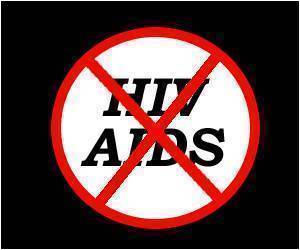- Make Valentine’s Day dining experience both delicious and health-conscious with healthy tips
- Opt for nutritious choices – fresh veggies, grilled and baked foods, and prioritize mindful eating
- Limit intake of unhealthy bread, excessive cheesy toppings, and sauces with high fat and calorie content
From romantic dinners to indulgent desserts, couples worldwide celebrate love on February 14th. Whether you adore or dislike it, Valentines Day remains a major restaurant event, often featuring hearty meals. However, with a few tips and careful planning, you can navigate the occasion without expanding your waistline.
Choosing healthy options for a restaurant-based Valentine’s Day celebration is a great way to enjoy a special meal while still prioritizing well-being. By being proactive and making thoughtful choices, you can enjoy a romantic and healthy Valentine’s Day celebration at a restaurant with the following tips.
Dine Smart with your Loved One: Healthy Valentine’s Day Dining Guide
Research Menus in Advance
Look up the restaurant’s menu online before you go. This allows you to make informed choices about healthier options and plan your meals in advance.
Begin on a Healthy Note
Opt for a light salad or soup with fresh vegetables, as your starter. This choice will help satisfy your appetite before delving into the main course. Additionally, you may consider sharing food with your significant other and cutting down portion size.
Choose Grilled or Baked Options
Opt for dishes that are grilled, baked, or steamed instead of fried or sautéed in heavy oils. This helps to reduce the overall calorie and saturated fat content of the meal.
Did You Know?
Sixty-one percent of men expect to eat at the restaurant compared to 40% of women, while 30% of women versus 20% of men expect to order takeout or delivery.
Skip the Bread Basket
If the restaurant offers a bread basket, consider skipping it or limiting the intake. If you want bread, opt for whole-grain varieties for added nutritional value. The same applies to chips.
Ask for Modifications
Feel free to make specific requests; inquire if the waiter can serve the sauce on the side or substitute veggies for French fries. Check if your meal can be prepared without butter, oil, or salt – anything that could contribute to calorie reduction.
Exercise Portion Control
Keep in mind that restaurant servings are typically larger than usual. Think about consuming only half of your meal and saving the remainder in a take-home container.
Advertisement
Steer Clear of Unnecessary Additions
Refrain from including numerous extras in your meal. Whether it’s a salad, burger, baked potato, or other entrees, avoid topping them with buttery croutons, grated cheese, bacon, and generous amounts of high-fat dressing.
Limit Sauces and Dressings
Sauces and dressings can be high in calories and unhealthy fats. Ask for them on the side so you can control the amount you use, or choose options with lighter sauces.
Advertisement
Embrace Red Color in your Food Choices
Opt for red bell peppers, radicchio, cherries, strawberries, red beans, red onions, and tomatoes as they are rich in vitamins, cancer-fighting antioxidants, and cholesterol-reducing fiber and protein.
Additionally, incorporating a daily glass of red wine is thought to lower the risk of blood clots and promote cardiovascular health (1✔ ✔Trusted Source
Contribution of Red Wine Consumption to Human Health Protection
Go to source). Instead of a sugary cocktail, consider choosing a glass of red wine (and inquire about a lighter version if available).
Read More to Know About ‘Budget-friendly Valentine’s Day: Preferring Picnic Over Gifts’
Hydration with Water
Choose water as your main beverage to stay hydrated. Limit sugary drinks and alcohol, or choose options with fewer added sugars.
Diversify your Gift Choices beyond Chocolate
If you and your significant other are focused on weight management, think about gifting a fruit basket or preparing a low-calorie dessert instead of opting for a box of chocolates. Additionally, keep in mind that various sugar-free candies and chocolate brands are readily available at local grocery stores or the candy section of pharmacies.
Consider alternatives like a bouquet of flowers, a healthy cookbook, personal training sessions, or a day spa gift certificate as meaningful substitutes.
Embrace Moderation, Not Deprivation
Avoid complete deprivation on Valentine’s Day, as it is a time for laughter, enjoyment, and indulging in food. Having a small slice of cake or a couple of truffles will not result in weight gain; moderation is the key.
If you decide to open that box of chocolates, don’t feel guilty. Research suggests that chocolate is rich in healthy compounds and may contribute to preventing heart disease, boosting the immune system, and promoting a sense of well-being (2✔ ✔Trusted Source
The Health Effects of Chocolate and Cocoa: A Systematic Review
Consider a Homemade Valentine’s Feast
Contemplate having a home-cooked meal this year – a fantastic way to conserve calories, save money, and steer clear of crowds. Discover a simple, reduced-calorie recipe that you can prepare either for or with your significant other. Rent some romantic movies, and conclude the evening with a delightful and healthy dessert, such as a strawberry shortcake adorned with your preferred low-calorie sweetener. Embrace the cozy atmosphere of a homemade celebration!
Embrace the spirit of Valentine’s Day without compromising your health and wellness by making thoughtful choices during your celebration. Remember, the key is to celebrate love and connection, and a healthy meal can contribute to both physical and emotional well-being.
References:
- Contribution of Red Wine Consumption to Human Health Protection – (https://www.ncbi.nlm.nih.gov/pmc/articles/PMC6099584/)
- The Health Effects of Chocolate and Cocoa: A Systematic Review – (https://pubmed.ncbi.nlm.nih.gov/34578786/)
Source-Medindia



